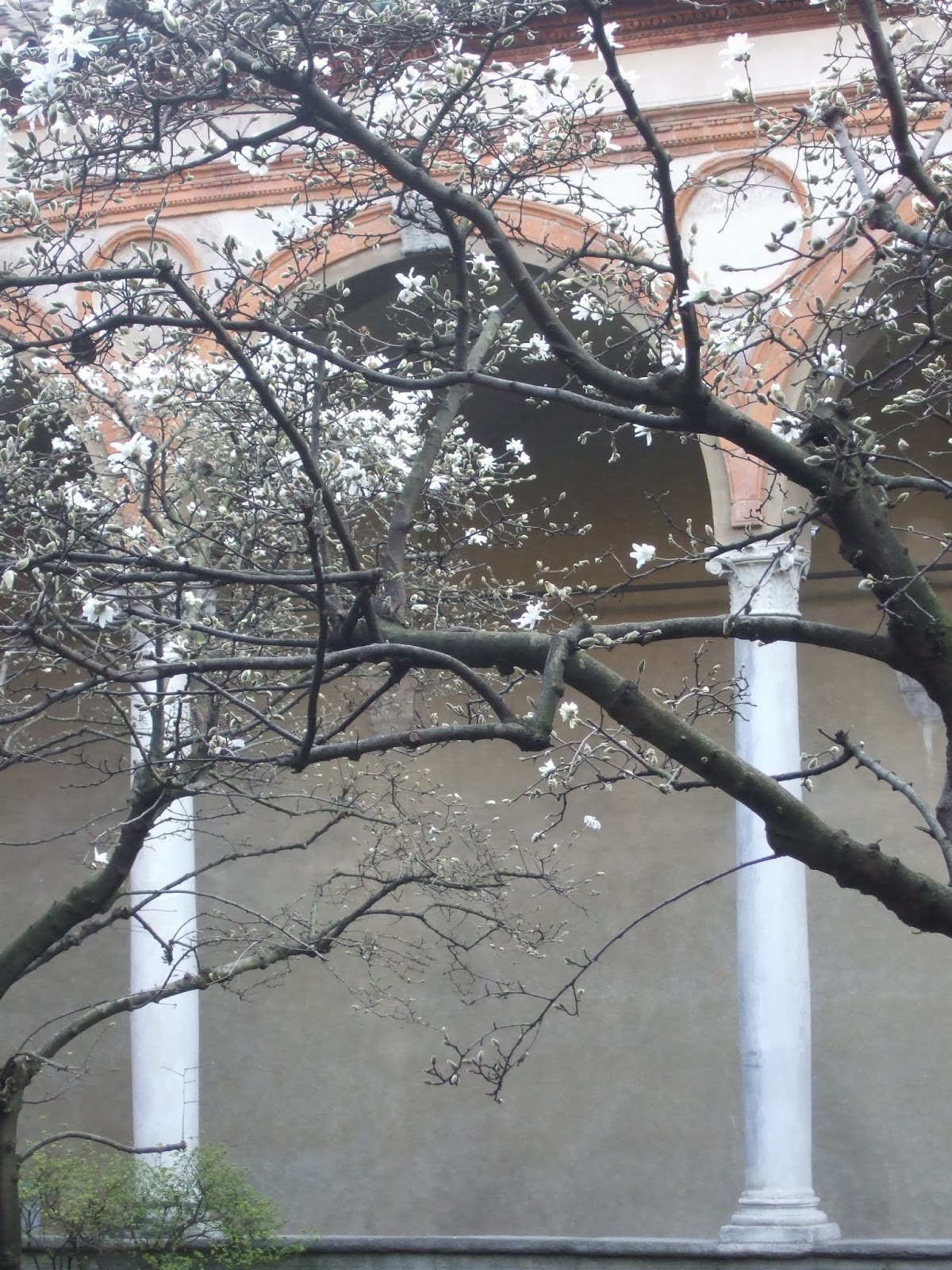There were farms, gardens and cultivated fields around the Church and Dominican Convent of Santa Maria delle Grazie (Holy Mary of Grace) when, around 1490, Ludovico Sforza (1452-1508), the Duke of Milan, decided to transform the beloved church into the mausoleum of the Sforza family.
The architect Donato Bramante (1444-1514) was involved in the works for the tribune and its imposing dome, while Leonardo da Vinci (1452-1519) painted The Last Supper, the famous tempera mural, in the refectory of the Convent.
To connect the tribune to the sacresty, Bramante created a chiostrino (small cloister). Simple and elegant, the quadrangular cloister has five arches on each side supported by slender columns. The central garden is crossed by perpendicular cobbled paths with a round basin in the centre. Spring magnolias are planted in the four quadrants.
 The cloister is also called the Chiostro delle rane (The cloister of the frogs) because of the four bronze batrachians that, squatting on the edges, spout happily fresh water. I have found no information about their introduction in this peaceful garden, but I like to think that they are a reminder of the rice fields and the flourishing kitchen gardens that punctuated the region a long time ago.
The cloister is also called the Chiostro delle rane (The cloister of the frogs) because of the four bronze batrachians that, squatting on the edges, spout happily fresh water. I have found no information about their introduction in this peaceful garden, but I like to think that they are a reminder of the rice fields and the flourishing kitchen gardens that punctuated the region a long time ago.
The architect Donato Bramante (1444-1514) was involved in the works for the tribune and its imposing dome, while Leonardo da Vinci (1452-1519) painted The Last Supper, the famous tempera mural, in the refectory of the Convent.
To connect the tribune to the sacresty, Bramante created a chiostrino (small cloister). Simple and elegant, the quadrangular cloister has five arches on each side supported by slender columns. The central garden is crossed by perpendicular cobbled paths with a round basin in the centre. Spring magnolias are planted in the four quadrants.
 The cloister is also called the Chiostro delle rane (The cloister of the frogs) because of the four bronze batrachians that, squatting on the edges, spout happily fresh water. I have found no information about their introduction in this peaceful garden, but I like to think that they are a reminder of the rice fields and the flourishing kitchen gardens that punctuated the region a long time ago.
The cloister is also called the Chiostro delle rane (The cloister of the frogs) because of the four bronze batrachians that, squatting on the edges, spout happily fresh water. I have found no information about their introduction in this peaceful garden, but I like to think that they are a reminder of the rice fields and the flourishing kitchen gardens that punctuated the region a long time ago.
In 1498, a grateful Ludovico Sforza donated to Leonardo da Vinci the vineyard next to Santa Maria delle Grazie to remunerate for his services.

Photos:
TravelinaGarden, Milan, March 2014.
Further reading:
Francesco Malaguzzi Valeri, La Corte di Ludovico il Moro, Bramante e Leonardo da Vinci, Ulrico Hoepli, Milano 1915.





No comments:
Post a Comment